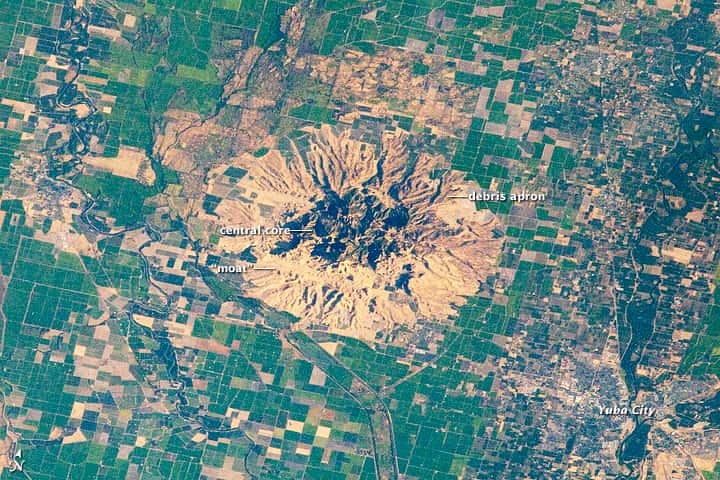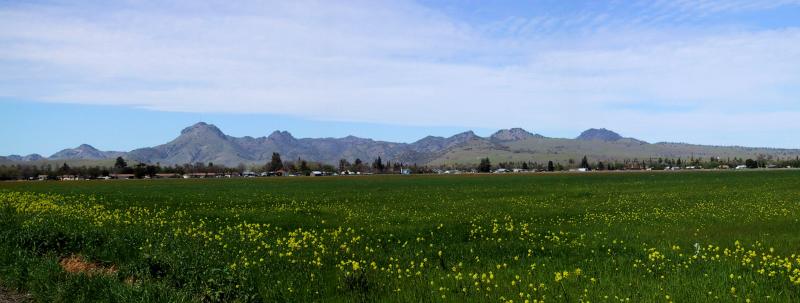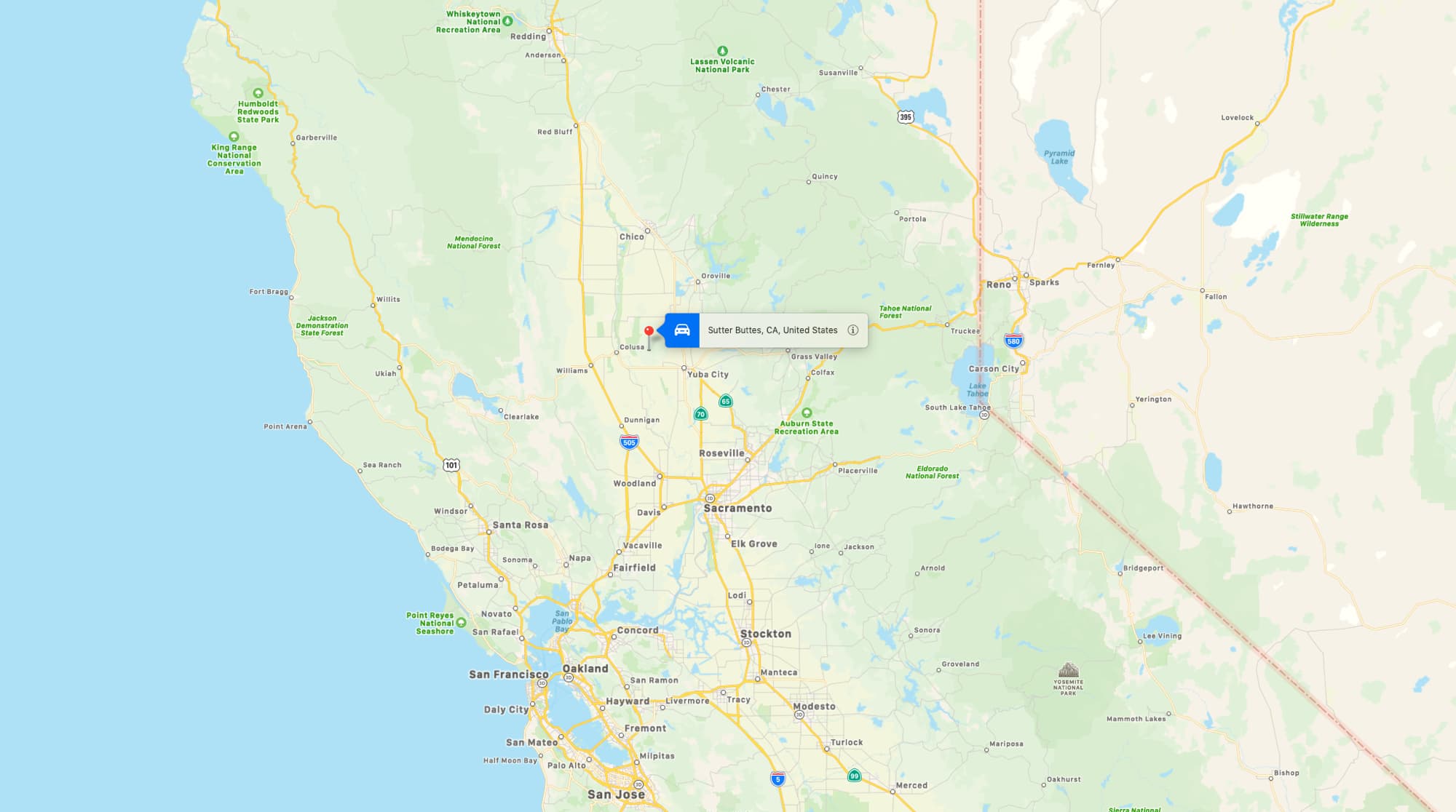
This post first appeared on NASA Earth Observatory
Sometimes called the “smallest mountain range in the world,” the Sutter Buttes rise almost 2,000-feet (610m) above the flat agricultural fields of the Great Valley of central California and can be seen from the top of Squaw Valley. The Sutter Buttes are remnants of a volcano that was active approximately 1.6 to 1.4 million years ago during the Pleistocene Epoch. The central core of the Buttes is characterized by lava domes—piles of viscous lava that erupted onto the surface and were built higher with each successive layer. Today, these lava domes form the high central hills of the Buttes; shadows cast by the hills are visible at the image center.
Surrounding the core is an apron of fragmental material created by occasional eruptions of the lava domes. This apron extends roughly 11-miles east-to-west and 10-miles north-to-south (16 by 18km). The volcanic material was transported outwards from the central core by volcanic gas-driven pyroclastic flows or cooler, water-driven lahars. Later stream erosion of the debris apron is evident from the drainage pattern surrounding the central core. A third geomorphic region of valleys, known as the “moat,” lies between the core and the debris apron and was formed by the erosion of older, exposed sedimentary rocks that underlie the volcanic rocks.

The Sutter Buttes present a striking visual contrast with the surrounding agricultural fields—mostly rice, with some sunflower, winter wheat, tomato, and almonds—of the Great Valley. Urban areas such as Yuba City, California (located 18 kilometers/11 miles to the southeast) appear light to dark gray stippled regions. Sacramento, California (not shown) is located approximately 80 kilometers (50 miles) to the south-southeast. The top image appears slightly distorted (oblique) due to the viewing angle from the International Space Station.

very cool
I thought the Appalachians were the worlds smallest range?
no your mom’s _____ is the smallest mountain range
Found the Ski the East guy!